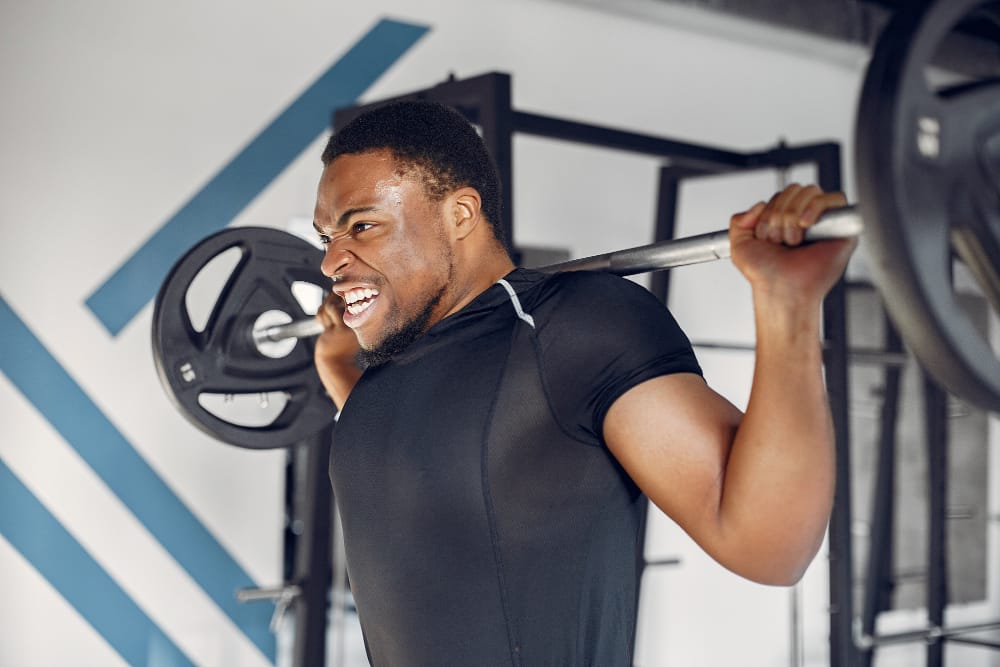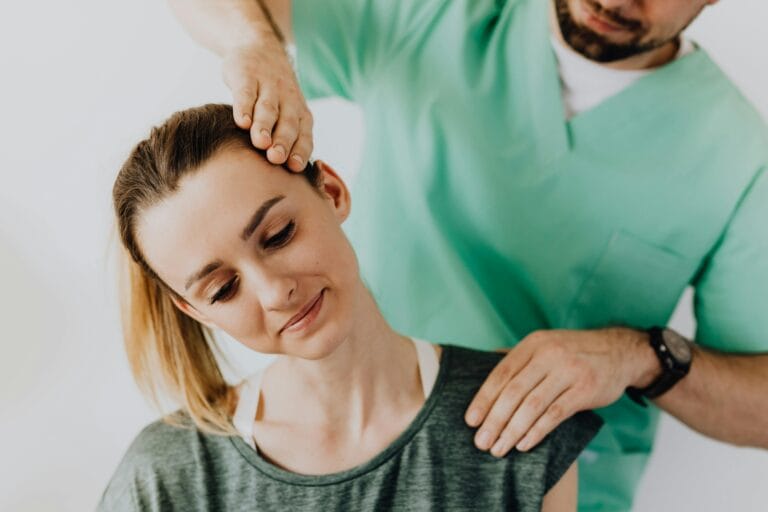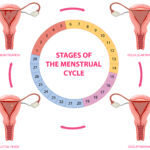FREE SHIPPING OVER $50
4 Common Gym Exercises That Do More Harm Than Good
Hitting the gym is a great way to stay fit, build strength, and boost your overall health. However not all exercises are created equal. Some popular gym moves, often performed with the best intentions, can do more harm than good. These exercises can lead to injuries, muscle imbalances, and long-term damage, whether it’s due to poor form, improper loading, or simply being outdated.
In this article, we’ll uncover four common gym exercises that might be sabotaging your progress—and what you should do instead. Let’s dive in and make sure your workout routine is as safe as it is effective.

1. Behind-the-Neck Lat Pulldowns
- Why It’s Harmful: This exercise forces your shoulders into an externally rotated position, which can strain the rotator cuff and impinge the shoulder joint. Over time, this can lead to chronic shoulder pain and even injuries like tendinitis.
- Who’s at Risk: Anyone with limited shoulder mobility or a history of shoulder issues.
- What to Do Instead: Stick to front lat pulldowns. Pull the bar to your chest while keeping your shoulders down and back. This variation targets the same muscles without compromising your shoulder health.
2. Upright Rows
- Why It’s Harmful: Upright rows involve pulling a weight vertically toward your chin, which can compress the shoulder joint and irritate the rotator cuff. This movement also places excessive stress on the tendons and ligaments in the shoulder.
- Who’s at Risk: People with shoulder impingement, rotator cuff issues, or poor shoulder mobility.
- What to Do Instead: Try lateral raises or face pulls. These exercises target the same muscle groups (deltoids and traps) without putting your shoulders at risk.
3. Leg Press with Excessive Weight
- Why It’s Harmful: While the leg press is a great lower-body exercise, loading it with too much weight can force your lower back to round, leading to spinal compression and potential disc injuries. Additionally, locking out your knees under heavy load can strain the joint.
- Who’s at Risk: Anyone with lower back issues, knee problems, or poor core stability.
- What to Do Instead: Focus on controlled, moderate-weight leg presses with a full range of motion. Alternatively, try squats or lunges, which engage more stabilizer muscles and promote functional strength.
4. Smith Machine Squats
- Why It’s Harmful: The Smith machine restricts your natural movement pattern, forcing your body into a fixed path. This can lead to poor squat mechanics, increased stress on the knees, and an unnatural spinal position.
- Who’s at Risk: Beginners, people with knee or back issues, and anyone lacking proper squat form.
- What to Do Instead: Opt for free-weight squats using a barbell or dumbbells. Free weights allow for a more natural range of motion and engage stabilizer muscles, reducing the risk of injury.
Why These Exercises Are Problematic
The common thread among these exercises is that they often compromise joint health and proper biomechanics. Here’s why:
- Poor Form: Many of these exercises require precise technique, which is often overlooked in favor of lifting heavier weights.
- Overloading: Adding too much weight increases the risk of injury, especially when combined with improper form.
- Limited Range of Motion: Some exercises restrict natural movement patterns, leading to muscle imbalances and joint strain.
- Outdated Practices: Fitness trends evolve, and some exercises that were once popular are now known to be risky.
How to Exercise Safely
To avoid injury and get the most out of your workouts, follow these tips:
- Focus on Form: Prioritize proper technique over heavy weights. If you’re unsure, work with a certified trainer.
- Warm Up Properly: Spend 5-10 minutes warming up to prepare your muscles and joints for exercise.
- Listen to Your Body: If an exercise causes pain (not to be confused with muscle fatigue), stop immediately and reassess.
- Incorporate Variety: Use a mix of exercises to target different muscle groups and avoid overuse injuries.
- Progress Gradually: Increase weight and intensity slowly to allow your body to adapt.
The Science Behind Safe Exercise
Research supports the importance of proper exercise selection and technique. For example:
- A study in the Journal of Sports Physical Therapy found that improper squat mechanics significantly increase stress on the knees and lower back.
- Research highlights the risks of shoulder impingement from exercises like upright rows and behind-the-neck pulldowns.
- A study emphasizes the importance of functional movement patterns to reduce injury risk and improve performance.
By choosing safer alternatives and focusing on proper form, you can maximize your results while minimizing the risk of injury.
Final Thoughts
Your gym routine should make you stronger, not sidelined. While the exercises listed above might seem effective, they often come with hidden risks that can derail your progress. By swapping them out for safer alternatives and prioritizing proper form, you’ll not only protect your body but also achieve better, more sustainable results.
So, the next time you hit the gym, think twice before loading up that Smith machine or pulling the bar behind your neck.
Related Articles
- How to Do The Glute Ham Raise: Tips, Machines, and At-Home Hacks
- Sculpt Your Dream Physique: Home Dumbbell Workouts for Total-Body Gains
- A Personal Trainer Reveals the Ultimate Cheat Sheet for Total-Body Fitness
- 4 Exercises That Ended My Knee Pain During Squats
- 5 Unique Exercises You Haven’t Tried Yet to Build Strong, Muscular Arms







